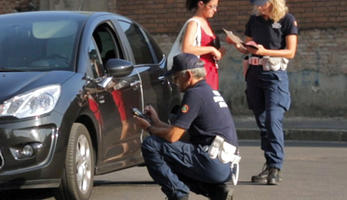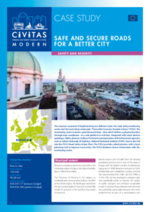Accident risk analysis and development of a road safety monitoring centre
Thematic areas
Clean & energy-efficient vehicles
Road safety & security
- Safer roads, bike and foot paths
Summary
Brescia wants to introduce a systematic process to improve road safety with the aim of reducing road accidents, particularly in terms of number of casualties and injuries.
Implementing sustainable mobility
The road accident trend in Brescia has always been monitored using yearly data from the National Institute of Statistics (ISTAT). Information contained in the ISTAT database is considerable: for every single road accident occurred in Brescia, it is possible to identify accident location, vehicles involved, circumstances, etc. Information is stored manually on the computer, involving a GIS platform built through close collaboration in the last two decades between the Mobility and Traffic Department of the Municipality of Brescia and the University of Brescia.
After 2002 the information ISTAT data were integrated with information from the Municipal Police for geo-referencing. This allowed authorities to collect considerable historical datasets to base road safety policies on. Since 2003 the contract with the University has not been renewed, leaving ISTAT to continue with data collection which was restricted in nature. Integration of information with Municipal Police data was not implemented anymore.
In this context, the measure envisioned a Road Safety Monitoring Centre and a Road Safety Urban Plan (PSSU) to be developed in Brescia.
Progress
Concerning the Road Safety Monitoring Centre, a new web platform was established at the Local Police Station for road accident relief enhancement. The main activities consisted in developing the software, purchasing handheld devices and training the local municipal police on the use of these devices during relief operations.
In parallel, the PSSU – designed according to the legal requirements – identified black-spots, priority areas of intervention, and road maintenance needs. It represents an innovative instrument that provides technical and objective criteria to help authorities choose the most suitable solutions for addressing road safety issues (black spots). The activities implemented by the measure allowed the city to manage road safety problems using a new systemic approach, namely through planning and programming the activities related to road safety. This innovative methodological approach also enabled integrated planning actions among different Municipal Departments (mainly Road Department, Public Works Department and Police Department).
Outcomes
The measure is characterised by activities that do not have visible impacts on road safety statistics in the short period. In Brescia, the number of road accidents increased from 2009 to 2010, while at national level the opposite trend is observed (-1,8%). At the same time crash severity decreased (the number of deaths goes from 14 in 2009 to 6 in 2010), which means that more accidents occurred but they were less serious.
Even if the scarce availability of data (2-3 years) did not permit significant statistical considerations, in general the number of pedestrians and cyclists dead or injured on roads slightly decreased or remained stable.
Finally there is a lack of awareness about the importance of the dissemination of the Urban Road Safety Plan, which is seen by the Local Administration as an internal issue that is not intended for citizens. This consideration is confirmed by the data collected for indicator Number 8 'Awareness level' about the PSSU, which decreased from 24% (2010) to 8% (2012).
To preserve the future reliability of the information systems, it is crucial to continue collecting, digitising and geo-referencing accident data to update the PSSU.








